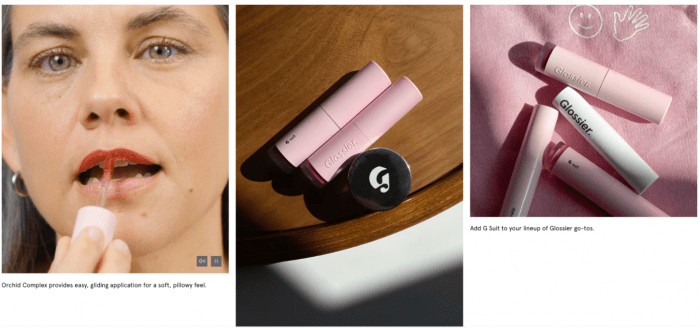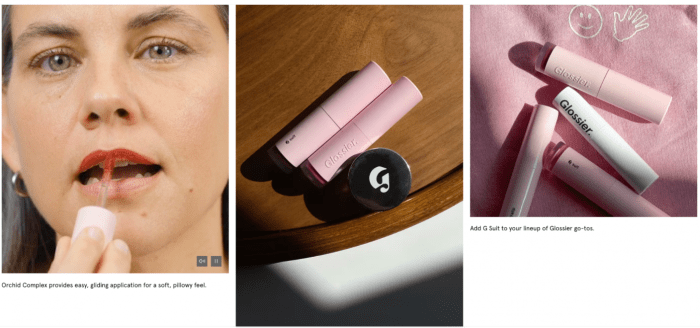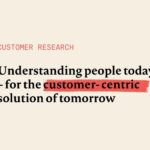Conversion rate optimization misconceptions can significantly hinder your business growth. This post dives deep into common misunderstandings about conversion rate optimization, revealing the pitfalls and offering practical solutions. We’ll explore how these misconceptions lead to ineffective strategies, and how to avoid them.
From misinterpreting user behavior to overlooking crucial technical aspects, we’ll dissect common errors and provide actionable insights. We’ll cover everything from the importance of user experience to the power of customer journey mapping and data analysis, and how to effectively use A/B testing.
Common Misconceptions About Conversion Rate Optimization
Conversion Rate Optimization (CRO) is a crucial aspect of any successful online business. Understanding its principles and avoiding common misconceptions is key to achieving significant improvements in website performance and revenue. By debunking these myths, we can better strategize and implement effective CRO strategies that yield tangible results.
Common Misconceptions and Their Impact
Many businesses fall prey to misconceptions about conversion rate optimization, hindering their progress and potentially missing out on significant opportunities. These misconceptions often stem from a lack of understanding of the multifaceted nature of CRO, leading to ineffective or even counterproductive strategies. Understanding these pitfalls is essential for developing a robust and successful CRO approach.
| Misconception | Explanation | Why it’s Incorrect | Correct Approach |
|---|---|---|---|
| Focusing solely on aesthetics and design. | Businesses often believe that a visually appealing website automatically translates into higher conversion rates. | While aesthetics are important, they are not the sole determinant of conversions. A visually stunning site can be ineffective if it lacks clear calls to action, logical navigation, and a user-centric design. | Prioritize a user-centered design that combines visually appealing elements with clear value propositions, intuitive navigation, and compelling calls to action. Conduct thorough user testing to understand how real users interact with the site and identify areas for improvement. |
| Conversion rate optimization is a one-time fix. | Some businesses believe that implementing a few changes will solve all conversion problems. | Conversion rates are dynamic and fluctuate based on user behavior and market trends. Continuously monitoring, testing, and refining the optimization process is essential for sustained growth. | Establish a continuous testing and optimization process. Use A/B testing, multivariate testing, and other experimentation methods to identify what works best for your target audience. Analyze data regularly and adapt your strategies accordingly. |
| Ignoring mobile optimization. | Some businesses believe that desktop optimization is sufficient, ignoring the mobile user base. | A significant portion of online traffic comes from mobile devices. A poorly optimized mobile site can severely impact conversion rates. | Prioritize mobile optimization. Ensure your website is responsive and provides a seamless experience across all devices. Conduct mobile-specific usability testing and analyze mobile conversion data to identify areas for improvement. |
| Overlooking the customer journey. | Many businesses focus on conversion without considering the customer journey. | The customer journey encompasses the entire process from initial awareness to purchase. Optimization efforts should be aligned with the customer’s expectations at each stage. | Understand the customer journey and optimize each stage to improve conversions. Analyze user behavior throughout the website, and implement solutions to reduce friction at each stage of the journey. This can involve optimizing landing pages, email marketing campaigns, and other touchpoints. |
| Treating all users as the same. | Businesses sometimes fail to segment their audience and create personalized experiences. | Different user segments may have different needs and motivations. Creating a personalized experience based on user segmentation will often improve conversion rates. | Segment your user base and personalize the experience for each segment. This involves collecting user data and using it to tailor content, offers, and calls to action. Use A/B testing to compare different approaches with different user segments to determine the best approach. |
Misinterpretations of User Behavior: Conversion Rate Optimization Misconceptions
Understanding user behavior is crucial for effective conversion rate optimization (CRO). However, common misinterpretations of user actions can lead to misguided strategies and ultimately, missed opportunities. Instead of assuming user intentions, a deeper dive into actual data and user journeys is essential. We need to move beyond assumptions and get to the root of what motivates visitors to take or not take the desired action.Often, we see patterns in website traffic and attribute them to specific behaviors, but these interpretations may be flawed.
By understanding these misinterpretations, we can better tailor our CRO efforts and create a more user-centric approach to improving conversion rates.
Common Misinterpretations of User Behavior
Incorrect assumptions about user behavior can lead to ineffective conversion strategies. These misinterpretations often stem from a limited view of the user journey, a lack of data-driven insights, and a reliance on anecdotal evidence. Instead of relying on intuition, it’s essential to use analytics and data to understand the true reasons behind user actions.
- Assuming High Bounce Rate Indicates Lack of Interest: A high bounce rate isn’t always a sign that users aren’t interested in the content. Users may be quickly finding what they need on the page and leaving satisfied. They might also be encountering technical issues or a poor user experience, which prevents them from exploring further.
- Attributing Low Conversion Rates to Lack of Engagement: While low engagement might be a factor, other reasons for low conversion rates include poor call-to-action (CTA) design, unclear value propositions, or a confusing user journey. Users might be engaged but still not convert due to a lack of clarity or compelling reasons to complete the desired action.
- Oversimplifying User Segmentation: Users are diverse, and categorizing them into overly broad segments (e.g., demographics alone) can result in inaccurate assumptions. Factors such as user intent, browsing history, and previous interactions with the website should be considered to create more nuanced segments and tailored experiences.
Correct Analysis of User Behavior
A crucial aspect of effective CRO is understanding thewhy* behind user actions. It involves going beyond surface-level metrics and delving into the user’s perspective to uncover the true reasons for their behavior.
- Utilizing Heatmaps and Clickstream Data: These tools provide valuable insights into where users are clicking on the website, which areas they’re spending the most time in, and what they’re ignoring. By visualizing user interaction patterns, we can identify areas of friction and opportunities for improvement.
- Employing A/B Testing: This allows us to systematically test different versions of webpages to determine which variations result in higher conversion rates. A/B testing provides concrete evidence of what resonates best with users.
- Conducting User Interviews and Surveys: Directly interacting with users through interviews and surveys helps us understand their motivations, pain points, and expectations. Qualitative data collected through these methods provides a crucial understanding of the user’s mindset.
User Behavior and Interpretation Table
| User Behavior | Incorrect Interpretation | Correct Interpretation |
|---|---|---|
| High bounce rate on product page | Users aren’t interested in the product. | Users may be quickly finding the information they need or encountering issues with the page design, leading to a quick exit. |
| Low conversion rate on a landing page | Users aren’t engaged with the content. | The landing page may lack a compelling value proposition, clear calls-to-action, or a user-friendly layout. |
| High time spent on a page, but low conversion rate | Users are deeply engaged, but something is preventing conversion. | The page may not be clear enough about the next steps or the user may not see value in the product/service. |
Overlooking Technical Aspects
Conversion rate optimization (CRO) often focuses on user experience and marketing strategies. However, a crucial component frequently overlooked is the technical underpinnings of a website. Poor website performance, a lack of mobile optimization, and security vulnerabilities can significantly hinder conversion rates, regardless of the quality of the marketing campaigns or user interface. Understanding these technical aspects is essential for maximizing the effectiveness of CRO efforts.
Technical Aspects Hindering Conversions
Technical issues are often hidden problems that negatively impact user experience, and ultimately, conversion rates. These problems can be insidious, as they don’t always manifest as obvious errors but rather as subtle performance degradations that accumulate and erode user trust.
Website Speed
Website speed is a critical factor in conversion rates. Users have very short attention spans, and slow-loading pages lead to frustration and abandonment. Studies consistently show a strong correlation between page load time and conversion rates. A delay of just a few seconds can significantly reduce conversions. For instance, a one-second delay in page load time can decrease conversions by 7%.
Mobile Responsiveness
The rise of mobile devices means that a significant portion of website traffic comes from smartphones and tablets. Websites that are not mobile-friendly, or responsive, provide a poor user experience on these devices. This can lead to difficulty navigating, reading, and completing actions on the site, resulting in a high bounce rate and lower conversion rates. A non-responsive site is like trying to read a book while holding it upside down.
Website Security
Security is a paramount concern. Users are increasingly aware of online threats, and a lack of security can significantly damage trust. Issues like broken links, insecure forms, and a lack of encryption can deter users from completing transactions. If a user feels their personal information is at risk, they are far less likely to proceed with a purchase or submit their details.
Conversion rate optimization (CRO) can be tricky, and there are a lot of misconceptions floating around. One common one is thinking that just throwing more fancy bells and whistles at your website will automatically boost conversions. However, a deeper dive into Google Analytics enhanced e-commerce features reveals that understanding user behavior through data is key.
Ultimately, successful CRO is about understanding your audience and refining your strategy based on real, measurable results, not just gut feelings.
Impact on Conversions: A Summary
| Technical Aspect | Impact on Conversions | Explanation |
|---|---|---|
| Website Speed | Decreased conversions | Slow loading times frustrate users, leading to abandonment. |
| Mobile Responsiveness | Reduced conversions | Poor mobile experience creates friction and difficulty for users. |
| Website Security | Loss of trust and conversions | Security breaches or concerns erode user confidence and deter transactions. |
Focusing Solely on A/B Testing
A/B testing is a powerful tool in the conversion rate optimization (CRO) arsenal, allowing businesses to compare different variations of a webpage or marketing campaign to identify which performs best. However, relying solely on A/B testing for CRO can be a significant oversight. It’s a valuable tool, but not a comprehensive solution.While A/B testing excels at identifying small, incremental improvements, it often misses the bigger picture of user experience and overall website performance.
A more holistic approach is crucial for achieving sustainable and significant conversion rate increases. Other factors beyond the immediate variation in a landing page, like technical issues or underlying user behavior patterns, might be overlooked if A/B testing is the only strategy.
Limitations of Solely Relying on A/B Testing
A/B testing, while useful, has limitations. It often focuses on surface-level changes, neglecting deeper issues that affect user experience and conversion rates. This can lead to a narrow scope of optimization and miss opportunities for more substantial gains. For example, a landing page might see a slight conversion improvement with a button color change, but the underlying issue of a complicated checkout process remains unresolved.
Complementary Conversion Rate Optimization Methods
Effective CRO strategies require a multifaceted approach. A/B testing should be complemented by other methods that address various aspects of the user journey.
- User Research and Feedback: Understanding user needs, motivations, and pain points is essential for developing effective strategies. Conducting user interviews, surveys, and usability testing provides valuable insights into user behavior and preferences. By understanding user needs, businesses can tailor their approach to resonate with their target audience, leading to higher conversion rates.
- Website Analytics and Data Analysis: Leveraging website analytics tools to understand user behavior and identify areas for improvement is critical. Analyze metrics such as bounce rate, time on page, and click-through rates to identify potential bottlenecks and areas of friction in the user journey. This allows for informed decisions on where to focus optimization efforts. For example, high bounce rates on specific pages might indicate issues with content relevance or clarity.
- Conversion Funnel Optimization: Optimizing the entire conversion funnel, not just individual pages, is crucial for improving overall conversion rates. Examine each stage of the process, from initial awareness to final conversion, to identify drop-offs and areas for improvement. For instance, a significant drop-off in the checkout process might indicate a need for clearer instructions or streamlined steps.
Comparison of Conversion Rate Optimization Methods
The following table summarizes the key differences between A/B testing and other complementary CRO methods.
| Method | Focus | Benefits | Limitations |
|---|---|---|---|
| A/B Testing | Testing variations of specific elements (e.g., button color, headline) | Identifies small, incremental improvements quickly | Limited scope, may miss underlying issues; doesn’t address user behavior or technical issues |
| User Research and Feedback | Understanding user needs and pain points | Provides insights into user behavior and preferences | Time-consuming, may not always be directly actionable |
| Website Analytics and Data Analysis | Identifying areas of friction and drop-offs | Provides data-driven insights for improvement | Requires technical expertise and tools; may not always pinpoint the root cause |
| Conversion Funnel Optimization | Improving the entire conversion process | Addresses all stages of the user journey | Requires a holistic view and a systematic approach |
Ignoring the Importance of User Experience (UX)

A crucial element often overlooked in conversion rate optimization (CRO) is user experience (UX). A website with a compelling value proposition but a frustrating user journey will rarely convert visitors into customers. Poor UX translates directly into lost revenue and missed opportunities. Understanding the intricacies of user behavior and designing a seamless experience is paramount for success.Poor UX directly impacts conversion rates by creating friction points that deter users from completing desired actions.
This friction can stem from various factors, from confusing navigation to poorly designed forms. Users encountering such obstacles are likely to abandon the site, leading to lost opportunities for conversions and ultimately impacting the bottom line. A positive UX, on the other hand, encourages users to engage, explore, and ultimately convert.
Common UX Issues Affecting Conversions
Understanding the common UX issues plaguing websites is essential for implementing effective solutions. These obstacles create a negative user experience, leading to lower conversion rates.
- Confusing Navigation: A poorly structured website with illogical navigation paths makes it difficult for users to find what they need. This frustration can lead to users abandoning the site without completing a purchase or desired action. A well-organized website with intuitive navigation helps users quickly locate the desired information or products.
- Poorly Designed Forms: Complex or unnecessarily long forms can deter users from submitting their information. Users are more likely to complete a concise and straightforward form with clear instructions.
- Slow Loading Speed: A slow website can significantly impact user experience. Users expect a fast and responsive website; delays can lead to frustration and abandonment. Optimize images, minimize code, and utilize caching strategies to improve loading times.
- Inconsistent Branding and Design: A website with inconsistent branding and design elements creates a disjointed user experience. Maintaining a consistent visual identity and brand messaging throughout the website creates a cohesive and memorable experience for users.
- Lack of Accessibility Features: A website that isn’t accessible to users with disabilities can alienate a significant portion of the potential customer base. Ensure your website adheres to accessibility guidelines to create a more inclusive and user-friendly experience.
Strategies for Enhancing User Experience
Implementing effective strategies to enhance user experience is critical for boosting conversion rates. These strategies address the various factors that influence user engagement and satisfaction.
- User-Centered Design: Conduct thorough user research to understand user needs, motivations, and pain points. This research helps inform design decisions, ensuring the website meets user expectations.
- Intuitive Navigation: Develop a clear and logical navigation structure that allows users to easily find the information they need. Use clear labels, logical groupings, and a consistent site architecture.
- Streamlined Forms: Design concise and user-friendly forms that require minimal input. Clearly label fields, provide helpful instructions, and limit the number of required fields whenever possible.
- Optimized Performance: Ensure the website loads quickly and efficiently by optimizing images, minimizing code, and utilizing caching strategies.
- Accessibility Considerations: Adhere to accessibility guidelines to make the website usable for all users, including those with disabilities.
UX Elements and Conversion Impact, Conversion rate optimization misconceptions
The table below illustrates the correlation between specific UX elements and their impact on conversion rates.
| UX Element | Effect on Conversions |
|---|---|
| Intuitive Navigation | Increased ease of use, higher conversion rates |
| Clear Call-to-Actions (CTAs) | Improved user engagement, higher click-through rates |
| Fast Loading Speed | Reduced bounce rate, improved user satisfaction |
| Mobile Responsiveness | Increased accessibility, higher conversion rates across devices |
| Visually Appealing Design | Improved user engagement, increased brand perception |
Ignoring the Value of Customer Journey Mapping
Often, businesses focus heavily on individual pages or campaigns without understanding the broader customer journey. This narrow perspective can lead to missed opportunities to optimize for the entire customer experience. A holistic view, incorporating customer journey mapping, is crucial for effective conversion rate optimization (CRO).Customer journey mapping isn’t just a theoretical exercise; it’s a practical tool for understanding how customers interact with your brand from initial awareness to final purchase.
By mapping this journey, you can identify pain points, friction points, and opportunities to enhance the experience at every stage, ultimately driving higher conversion rates.
Customer Journey Mapping in CRO
Customer journey mapping is an essential component of CRO. It allows businesses to understand the entire customer experience, from initial awareness to final purchase. This understanding helps in identifying friction points and areas for improvement in the customer experience. This is crucial for maximizing conversion rates.
Impact of Lack of Journey Mapping
Without a clear understanding of the customer journey, businesses risk missing crucial touchpoints and pain points. This can result in a fragmented customer experience, leading to confusion and ultimately lower conversion rates. Customers may drop off at various stages due to unclear messaging, poor navigation, or a lack of personalized interactions. The failure to map the customer journey can leave significant opportunities for optimization unexploited.
Thinking conversion rate optimization is just about fancy landing pages? Think again! While a great design is part of the puzzle, it’s crucial to understand that boosting engagement on social media platforms like Twitter can dramatically impact your conversion rates. Check out these 5 tools to increase Twitter engagement overnight 5 tools to increase twitter engagement overnight to see how a strong social media presence can directly address many conversion rate optimization misconceptions.
Ultimately, optimizing conversions involves more than just tweaking your website; it’s about understanding the full customer journey.
Examples of Customer Journeys and Touchpoints
Let’s consider a hypothetical online clothing retailer. A customer’s journey might begin with seeing an advertisement on social media (touchpoint 1). They then visit the website to browse products (touchpoint 2), add items to their cart (touchpoint 3), encounter a complicated checkout process (touchpoint 4), and finally receive a confirmation email (touchpoint 5). Each touchpoint presents an opportunity for optimization.
For instance, a poorly designed website could deter customers from adding items to their cart (touchpoint 3), while a confusing checkout process could result in abandoned carts (touchpoint 4).
Customer Journey Mapping Table
| Stage | User Actions | Optimization Opportunities |
|---|---|---|
| Awareness | Seeing an ad, browsing social media, searching online | Create engaging ads, improve , optimize social media presence |
| Consideration | Visiting product pages, reading reviews, comparing products | Highlight product benefits, provide detailed product information, showcase customer testimonials |
| Decision | Adding to cart, proceeding to checkout, selecting payment method | Simplify the checkout process, offer multiple payment options, provide clear and concise pricing |
| Action | Completing purchase, receiving confirmation email | Ensure smooth order fulfillment, send timely updates, offer post-purchase support |
| Advocacy | Sharing their experience, recommending to others | Encourage reviews and testimonials, provide excellent customer service, create a loyal customer base |
“A well-defined customer journey map helps businesses identify critical touchpoints and optimize the customer experience at each stage, leading to increased conversions.”
Underestimating the Power of Analytics

Conversion rate optimization (CRO) isn’t just about guesswork and intuition; it’s deeply rooted in data analysis. Without a strong understanding of user behavior and website performance, your CRO efforts can be like shooting arrows in the dark. Effective CRO relies on understanding what’s working, what’s not, and why. This often hinges on a comprehensive analysis of data.Data analysis provides the crucial insights necessary to identify bottlenecks in the customer journey, pinpoint areas for improvement, and measure the impact of implemented changes.
So, you’re trying to nail down conversion rate optimization (CRO)? It’s easy to get caught up in the minutiae, focusing on tiny tweaks instead of the bigger picture. Sometimes, the biggest improvements come from focusing on creating genuinely loyal customers, like the kind you discover in the create freakishly loyal customers guide. Ultimately, CRO isn’t just about button placement; it’s about understanding your customers and building a relationship that fosters genuine loyalty, leading to long-term success.
That’s the real secret to effective CRO.
By meticulously examining website traffic, user interactions, and conversion patterns, businesses can make data-driven decisions, leading to significant improvements in conversion rates. This data-driven approach avoids costly experimentation and allows for more targeted and effective interventions.
The Importance of Data Analysis for CRO
Effective CRO hinges on understanding user behavior and website performance through data analysis. It provides a framework for informed decisions, minimizing guesswork and maximizing the impact of optimization efforts. Comprehensive data analysis allows you to pinpoint pain points in the user experience, tailor strategies to specific user segments, and measure the effectiveness of implemented changes. Without data analysis, CRO initiatives risk becoming ineffective, costly, and inefficient.
Analytics Tools and Metrics for CRO
Various tools and metrics are crucial for a comprehensive understanding of user behavior and website performance. These tools provide valuable insights, helping you identify areas for improvement and track the effectiveness of implemented changes. A wide range of tools cater to diverse needs, ranging from basic website analytics to advanced behavioral analysis.
- Google Analytics: A widely used platform for tracking website traffic, user behavior, and conversion rates. It offers detailed insights into user demographics, interests, and interaction patterns on the site. Google Analytics allows for the segmentation of users, enabling a deeper understanding of specific user groups. This data can be used to personalize the user experience and tailor strategies to specific user segments.
- Heatmaps and Scrollmaps: These tools visualize user interactions on a website. Heatmaps highlight areas of high user engagement and areas of inactivity, while scrollmaps reveal how far users scroll down web pages. They offer a clear picture of user engagement patterns and can identify navigation challenges.
- A/B Testing Platforms: Tools like Optimizely and VWO help in comparing different versions of web pages to identify the most effective design. These platforms allow you to track conversion rates and other key metrics for different variations, helping to refine user experience.
Misinterpreting Analytics Data
The improper use of analytics can lead to misleading conclusions. Careless interpretation or a lack of context can lead to ineffective optimization strategies. It’s crucial to avoid jumping to conclusions based on isolated data points without considering the broader context.
- Correlation vs. Causation: A common pitfall is confusing correlation with causation. Just because two metrics are related doesn’t mean one causes the other. Carefully investigate potential underlying factors to avoid misinterpretations.
- Sample Size: Insufficient sample size can result in inaccurate conclusions. The data set must be large enough to represent the target audience adequately. For example, running an A/B test with a limited number of participants may lead to unreliable results.
- Ignoring External Factors: External factors like marketing campaigns or industry trends can influence website traffic and conversion rates. Failing to account for these external factors can lead to incorrect interpretations of data.
Key Metrics, Tools, and Importance
A structured approach to analyzing data is crucial for effective CRO. The table below highlights key metrics, tools, and their importance.
| Metric | Tool | Importance |
|---|---|---|
| Conversion Rate | Google Analytics, A/B testing platforms | Measures the percentage of visitors who complete a desired action (e.g., purchase, sign-up). |
| Bounce Rate | Google Analytics | Indicates the percentage of visitors who leave the site after viewing only one page. High bounce rates may signal issues with website design or user experience. |
| Average Session Duration | Google Analytics | Reflects the average time spent by users on the website. This metric helps assess user engagement and interest in the content. |
| Click-Through Rate (CTR) | Google Analytics, A/B testing platforms | Indicates the percentage of users who click on a specific link or button. It’s crucial for evaluating the effectiveness of calls to action and website elements. |
Misinterpreting Conversion Data
Conversion rate optimization (CRO) relies heavily on data analysis. However, even with robust data, misinterpretations can lead to misguided optimization strategies. Understanding the nuances of conversion data is crucial for effective CRO. Often, apparent trends in the data can be misleading if not carefully examined within the broader context.
Common Conversion Data Misinterpretations
Data analysis requires a nuanced approach, going beyond simple surface-level observations. A common pitfall is attributing changes in conversion rates to isolated factors without considering the interconnected nature of variables. For instance, a sudden increase in conversions might be mistakenly linked to a recent campaign, when in fact, it could be a result of broader market trends or seasonal influences.
Interpreting Conversion Data Correctly
Accurate interpretation requires a comprehensive understanding of the factors influencing conversion rates. It’s essential to look at the bigger picture, encompassing user behavior, technical aspects, and the overall user experience. Data should be scrutinized for potential correlations and causations. Simply observing a correlation between two variables doesn’t automatically mean one causes the other. A deeper investigation is needed to determine if there’s a genuine causal relationship.
Statistical significance tests can help validate any observed patterns.
Examples of Misinterpretations and Their Correct Analyses
| Misinterpretation | Correct Analysis |
|---|---|
| Increased Conversion Rate After a New Landing Page Launch The new landing page resulted in a 15% increase in conversion rates. |
Possible Factors Influencing Conversion Rate Increase The new landing page could have a positive impact, but other contributing factors must be considered. Was there a simultaneous change in marketing strategy or seasonal variation in demand? A comprehensive analysis including competitor activities, marketing spend, and user behavior is crucial to isolate the actual impact of the new landing page. |
| High Bounce Rate on a Specific Page A high bounce rate (80%) on a specific page indicates a poor experience. |
Understanding the Context of the Bounce Rate A high bounce rate isn’t necessarily bad. The bounce rate should be evaluated in the context of the page’s purpose. If the page is a thank-you page or a page that’s meant to lead to another action, a high bounce rate might be expected. Analyzing the exit pages and user behavior patterns on the page is crucial. |
| Increase in Conversion Rate Following a Price Reduction The 10% price reduction resulted in a 20% increase in conversion rates. |
Correlation vs. Causation While there’s a correlation, it doesn’t necessarily imply causation. A variety of factors could have contributed to the increased conversion rate, such as increased demand, competitor pricing changes, or an improvement in the overall marketing campaign. A controlled experiment or comparison to a control group would be needed to establish a cause-and-effect relationship. |
Final Summary
In conclusion, successful conversion rate optimization goes beyond surface-level tweaks. It demands a deep understanding of user behavior, technical necessities, and the overall customer journey. By acknowledging and addressing these misconceptions, you’ll pave the way for more effective strategies and ultimately, higher conversion rates. This comprehensive guide provides the knowledge you need to navigate the complexities of CRO and achieve remarkable results.





